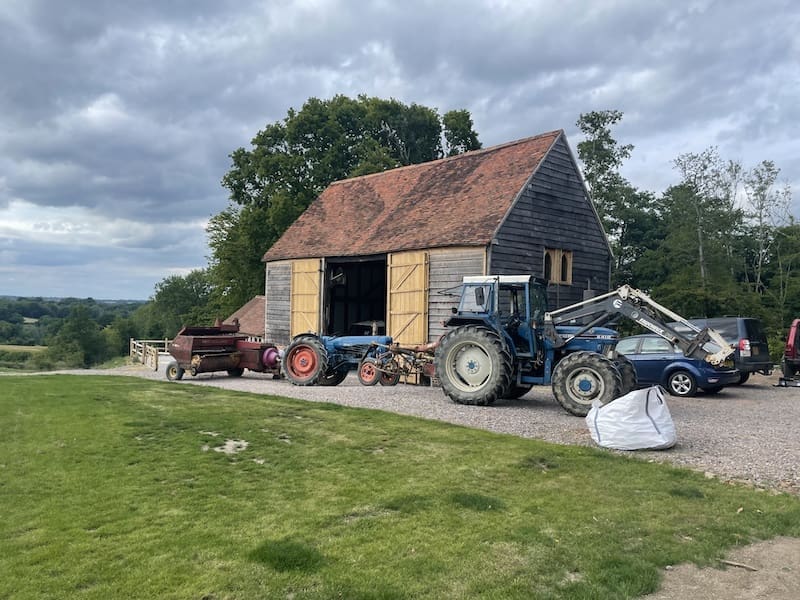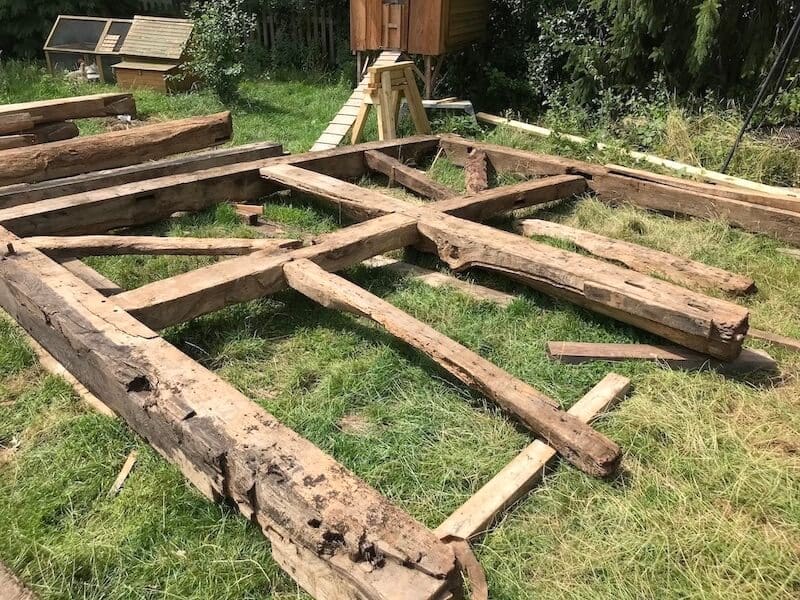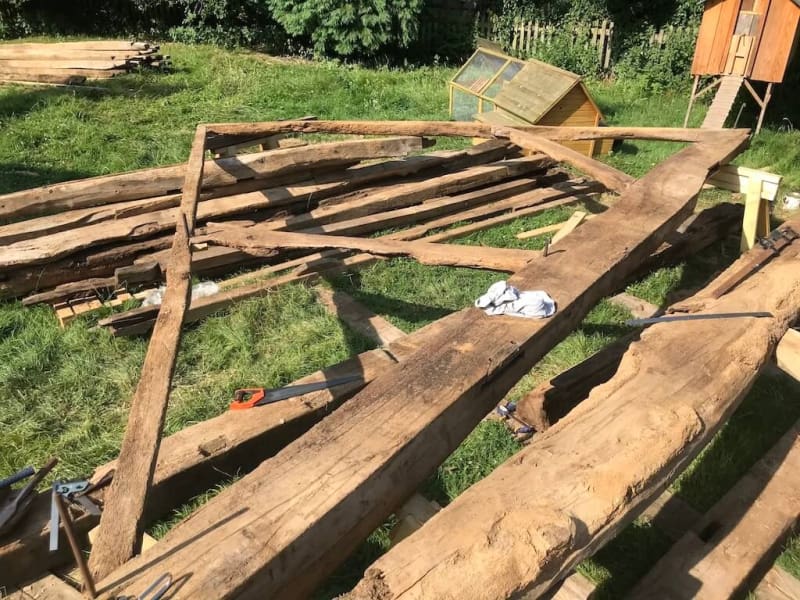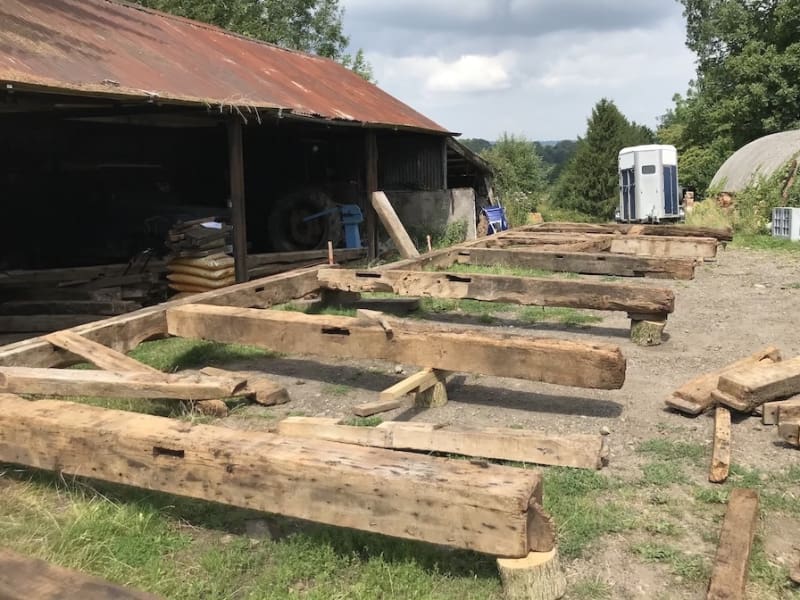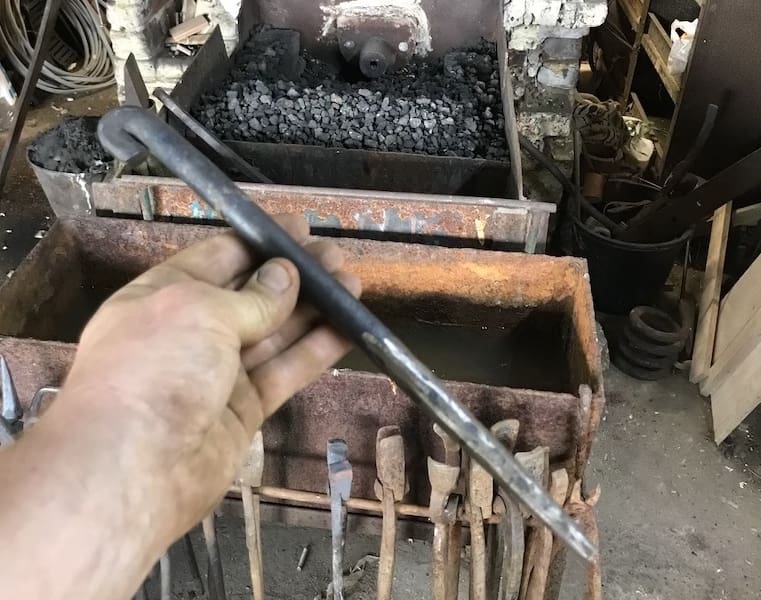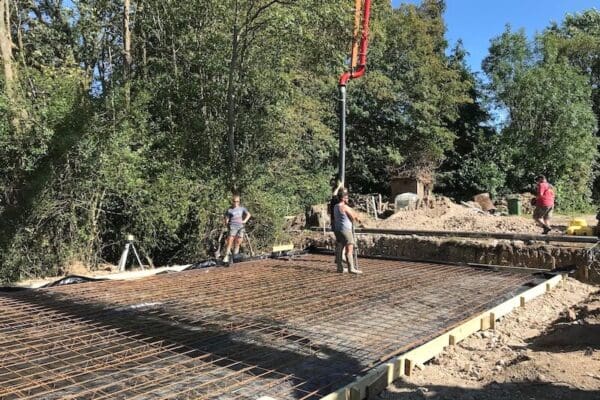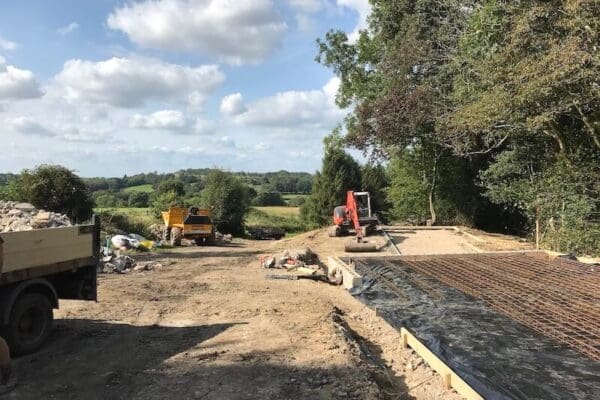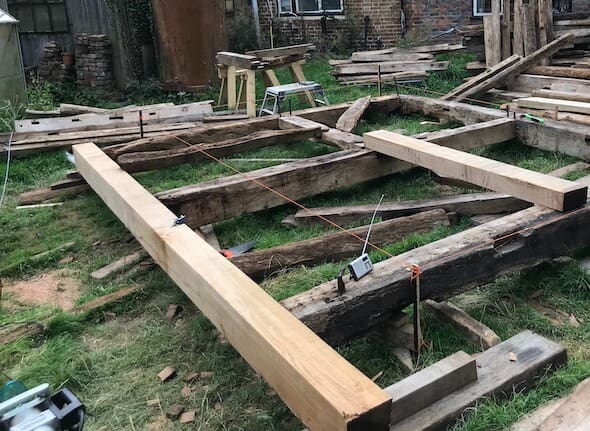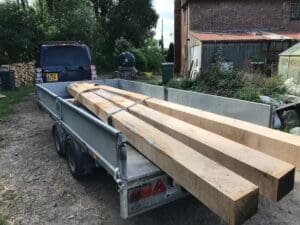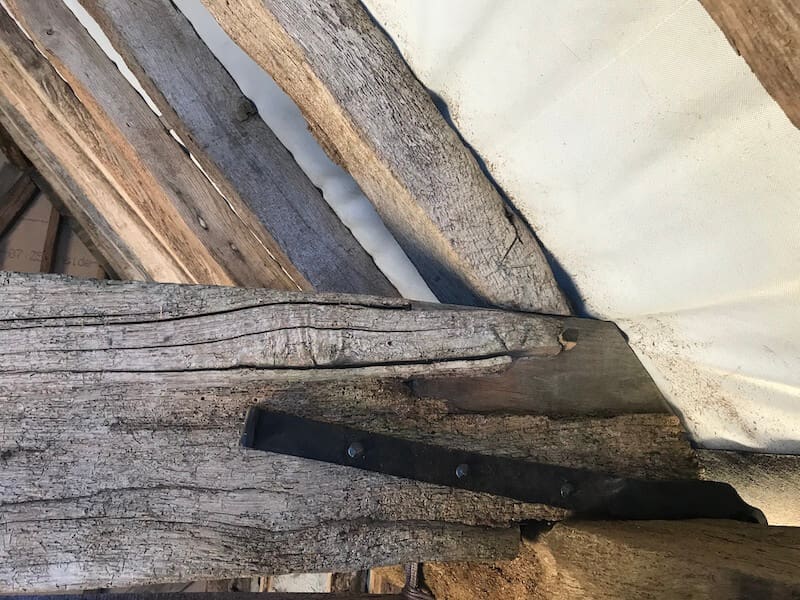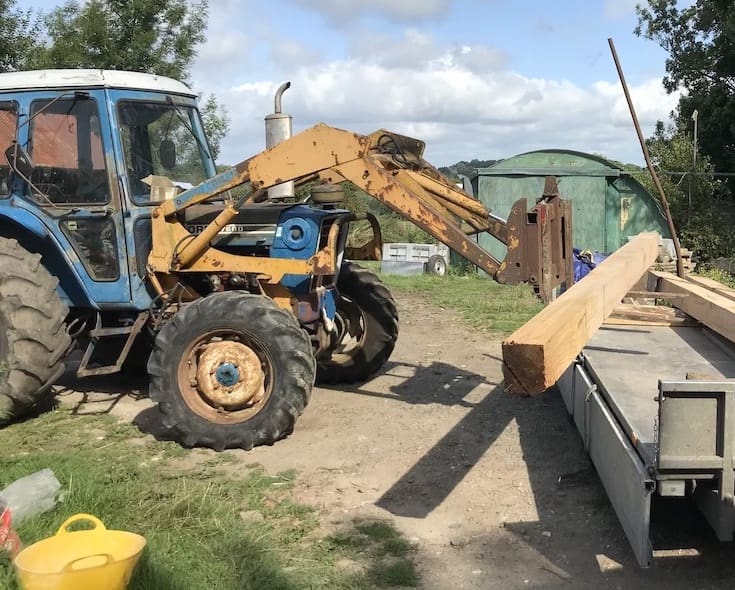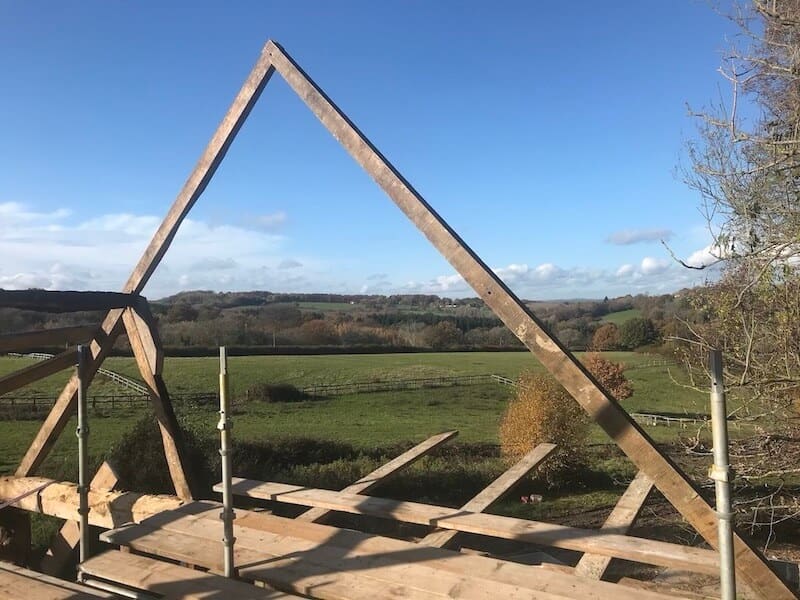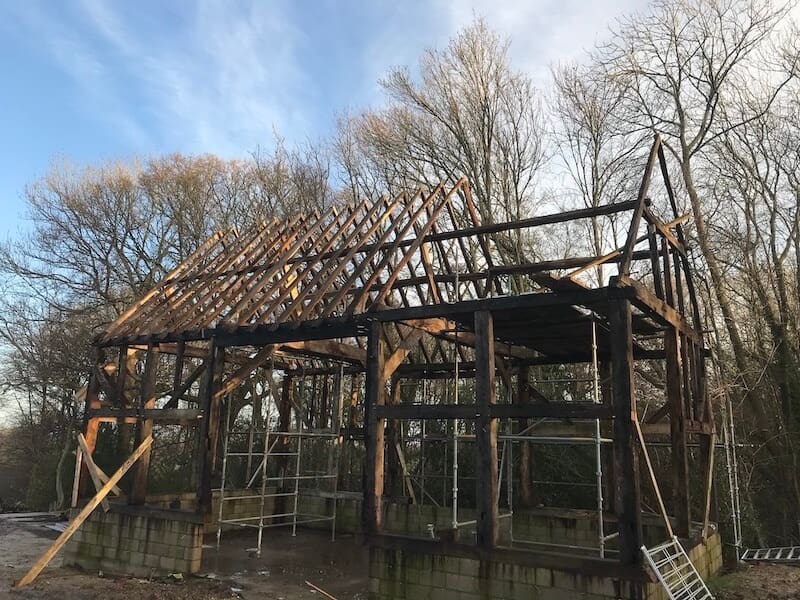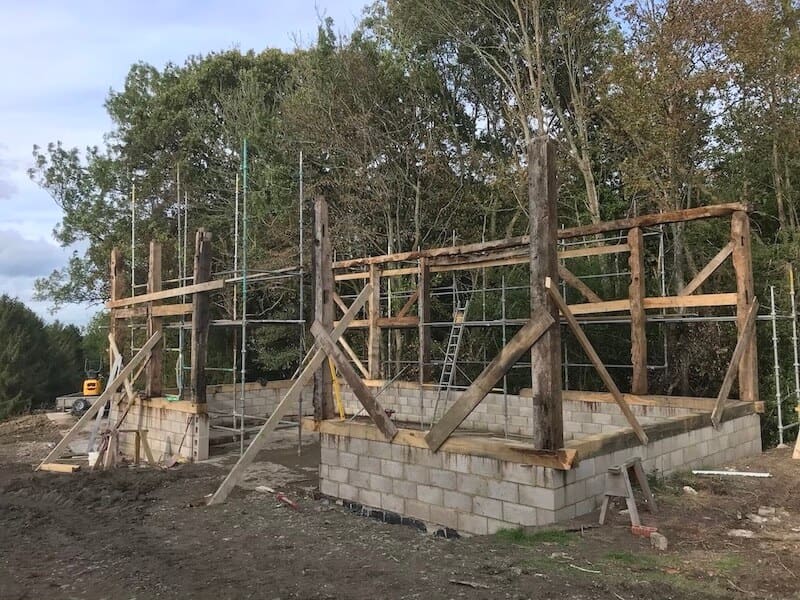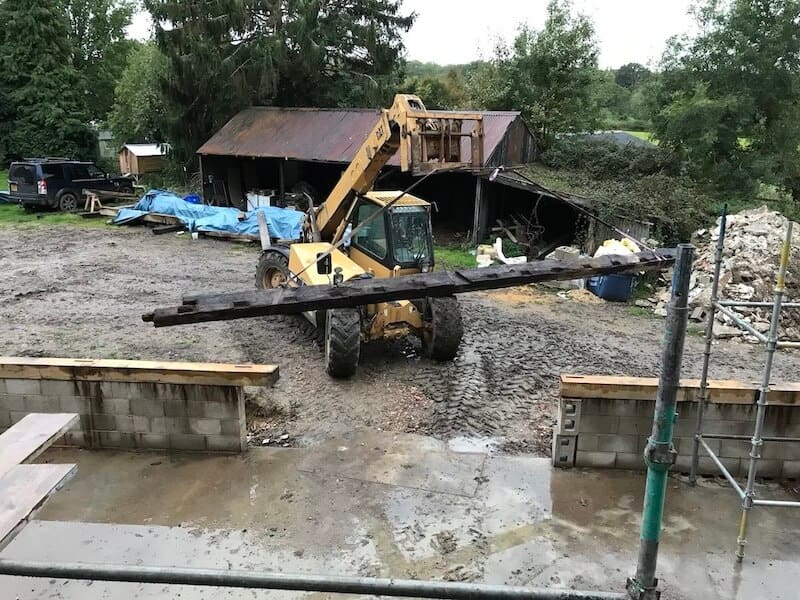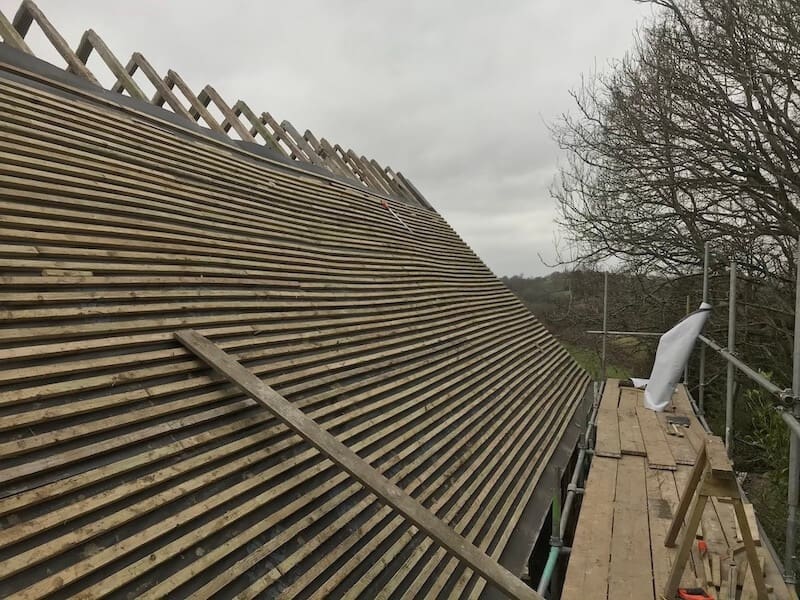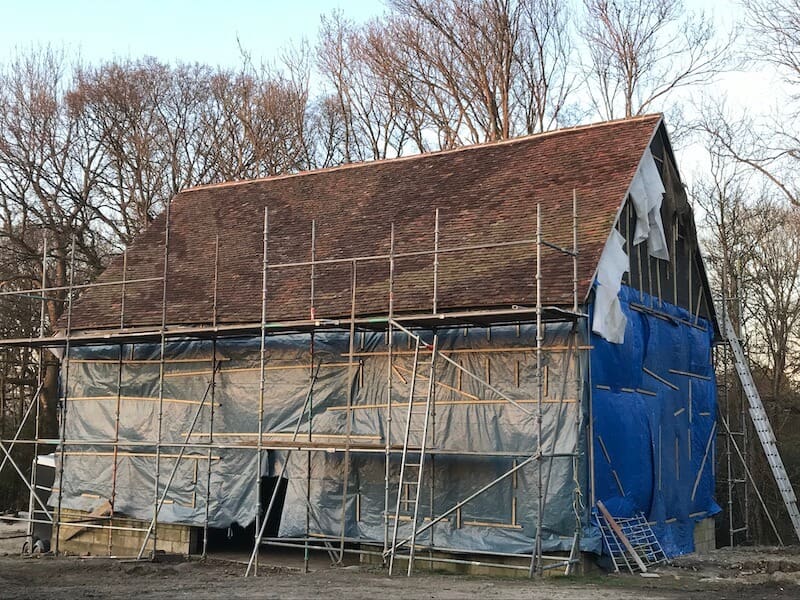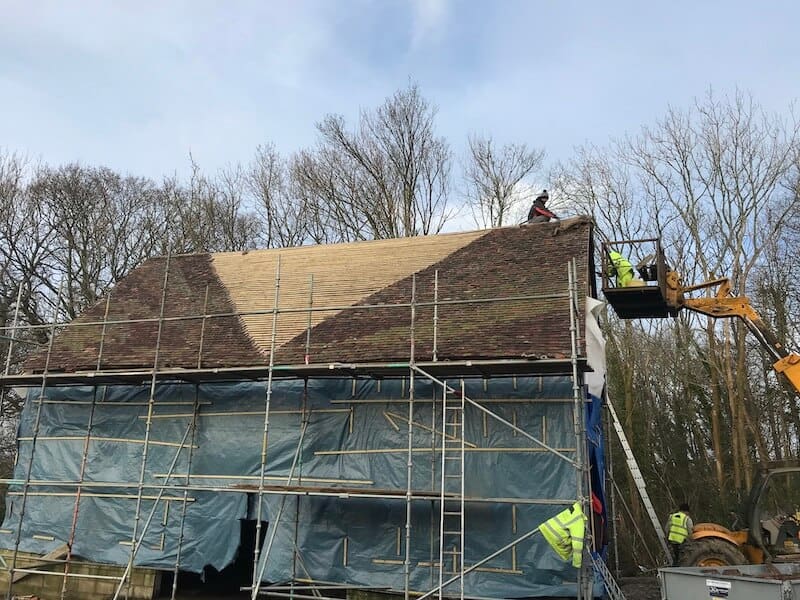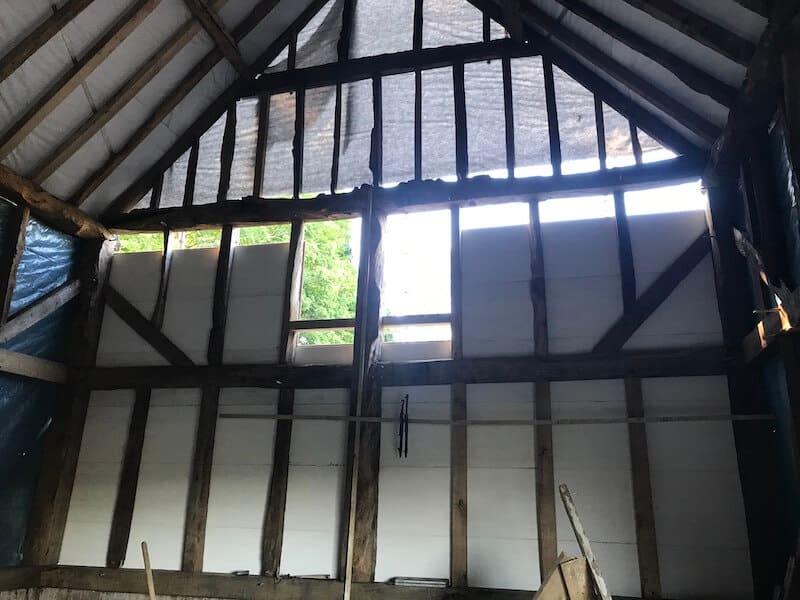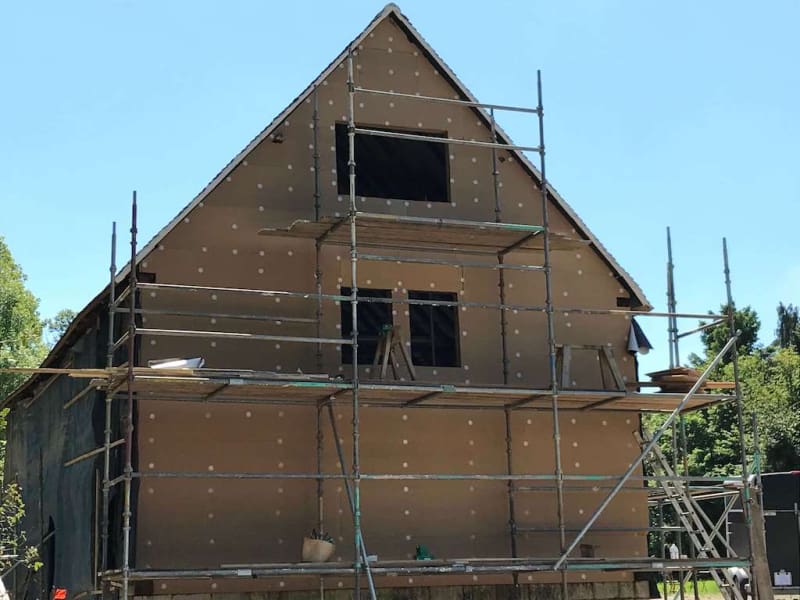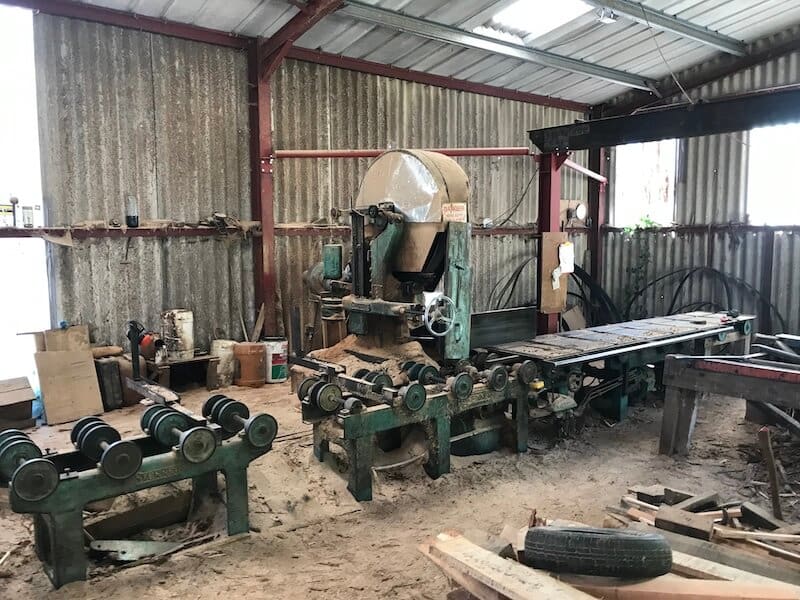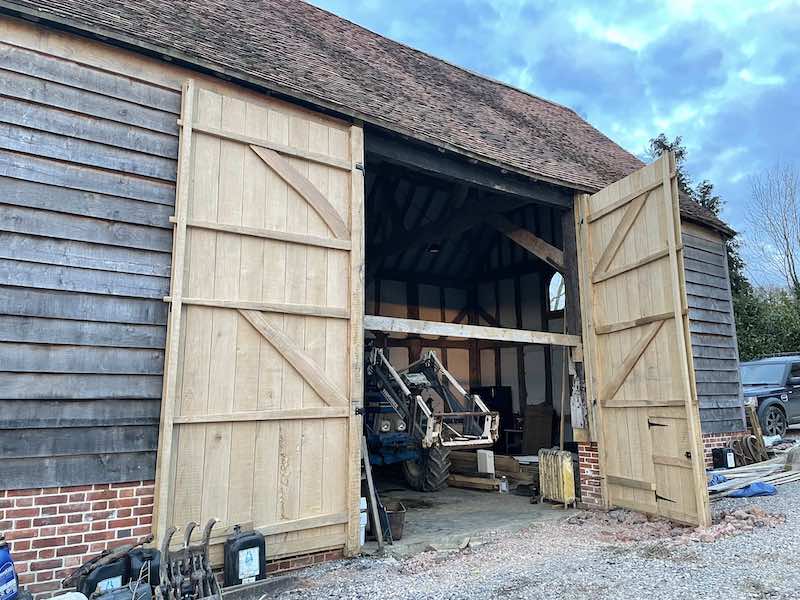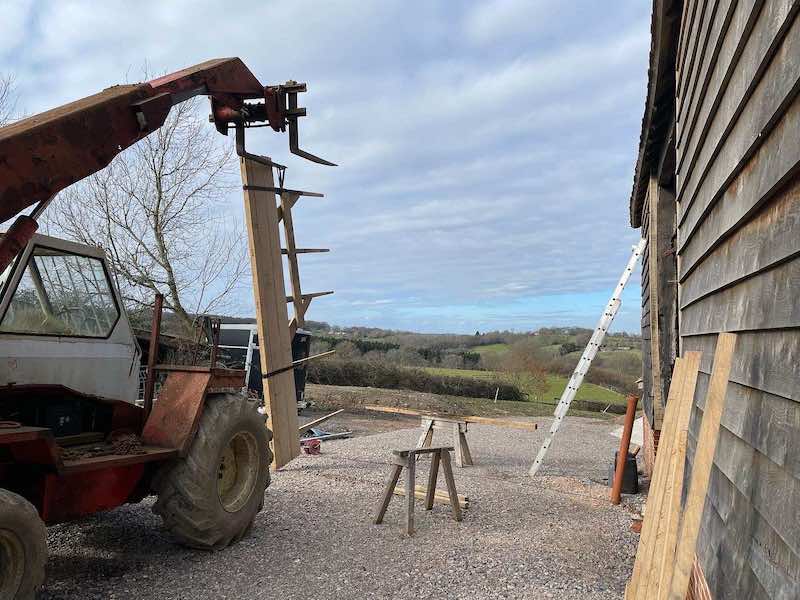What we did
Moving a barn from one place, to another
The barn was moved from Collendean (near Gatwick) to a small village in East Sussex. The barn replaced an existing Asbestos Nissan hut.
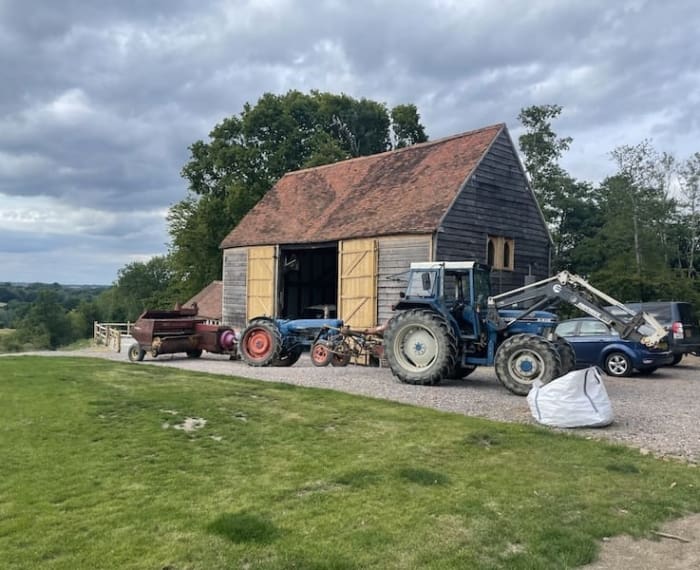
The detailed story
The reconstruction and repair of a 18thc Oak Threshing Barn
Collendean Barn originally stood in a small village in Collendean (near Gatwick Airport) and was built in around 1700. It is an unusual barn as it is wider than usual and has some very substantial principle timbers. Richard purchased the barn from Peter Barker at Antique Buildings who saves and offers for sale such buildings.
Here are some pictures and the story of the re-build and its reconstruction to be used as an agricultural Barn. The build was completed by Richard pretty much on his own with the exception of 2 days assistance from a local farmer friend with a telehandler. This is not an exemplar of timber framing this is just Richards story of his Barn.
There is an elephant in the room that needs to be addressed first. The barn has a reinforced concrete floor and a blockwork plinth. This is not a shining example of conservation excellence, however it must be remembered the barn is to be used for heavy agricultural machinery storage and was ultimately built to a price.
The barn has been built for a LOWER cost than an equivalent sized metal framed agricultural unit . So, do timber framed buildings still have a place in modern agriculture over concrete and metal barns ? I think so, they certainly look better.
In pictures
Building reconstruction
Unfortunately, none of the timbers were marked or labelled when the barn was taken down. I did have some pictures of when it originally stood in Collendean which proved very useful in working out what went where.
Before I started I needed some metalwork and some basic tools. I needed a new auger for boring out inch and a quarter peg holes, and a shave horse to make pegs. I made around 30 draw bore pins (podgers), a set of iron tie straps to reinforce the tie beam connection and a few iron lifting hooks for making moving the timber around easier.
I then embarked on the longer process than I first anticipated of locating what timber went where. This was more time consuming than first thought mainly due to the weight of the timbers and the time it takes to move them around. It was eventually achieved though, and the wall frames were set out and made ready for repairs and re-assembly. The timbers were labelled ready for assembly.
Working out what went where.. from laying out all the roof and wall frames and making a lot of podgers.
Methods
Repairs
There were a number of repairs required, again….more than anticipated. I essentially copied the repair methods as best I could from the fantastic work Joe Thompson (and others) at the Weald and Downland have carried out. I have undertaken the timber framing course with Joe and the Building Conservation masterclass and I cannot endorse his and the Weald and Downland’s work highly enough.
There is a great magazine publication by the Weald and Download museum , which documents the repair of Tindals cottage. It details repair methods and some methods. Here are some of my own versions of these repairs. (Get the Weald and Downland Document here – Its the 2013 Magazine)
From scratch
Sole Plates
The sole plates were missing completely so an entire new sole plate frame was re-made. All the wood for the project was from a single tree that had fallen on my own land and I had sawn up into beams. The timber was still green even though it had been down for around 15 years. Amazing. I was also happy Oak from the farm was used to repair the barn and it was not imported.
The oak butt used was about 4.5m long and at its widest part around 2m. Sam who picked it up for me (http://www.sjmtreesurgery.com) who has some very big kit even struggled to get it out….of course he got it out though and it provided all the timber for the barn sole plates, and various repairs.
What we did
Foundation and groundwork
The foundations and groundwork were all done by a local Farmer / Contractor whom is also my neigbour (Ben Foy Ltd) who installed a reinforced concrete footing with mini piles. They did a fantastic job. A limecrete or traditional footing would not have worked as the barn is located at the end of a sharp bank, with a steep drop and pond behind, and for the barn to be cited where it is located requires a substantial footing. It is also to be used for Agricultural machinery.
Reassembling
Rebuilding the Frame
The frame was reassembled over a few months (as I only had limited time each weekend to commit to it) and went together very easily.
The majority of the lifting was done with Richards Ford 7600 County Tractor which dates from the 1970’s and is pretty basic. The wall plates needed a lift from a neighbour with a tele handler.
More work
Roof
Once the framing was completed, its time to put a roof on. The roof will have a breather membrane, with batons and peg tiles over. Traditionally breather membrane would not have been used. Due to the roof being very un-even setting the baton gauge was done with string lines.
The tiles were purchased from a local sable block that was being recovered in tin. The tiles are Sussex peg tiles (which are slightly smaller than Kent pegs). They are a lovely shape and size with various quirks.
Additional weatherproofing
Insulation and sheathing
The Barn is located is on top of an extremely exposed hill in one of the highest points in East Sussex. It is extremely exposed and the area gets absolutely battered by the wind. To be on the safe she I decided to use a 35mm Wood Fibre Sheathing board to make the gables like a diaphragm and also to provide some insulation.
The boards are lime washed internally to provide a light and airy feel.
Further work
Cladding
The Barn is being Clad with Oak 10 Inch wide Boards. I have some nice decorative Window Heads also to deflect the rain water.
Solid oak
Barn Doors
The monster barn doors were made and hung about 1 year after the barn was finished. All solid Oak and copied from a number of different barn doors at the Weald and Downland Museum
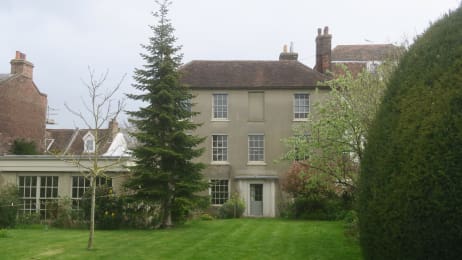

Get in touch with the Heritage Consulting team today
Our friendly and experienced team are on hand to help with any of your questions or concerns. Get in touch today to see how we can help you.
Contact Us
